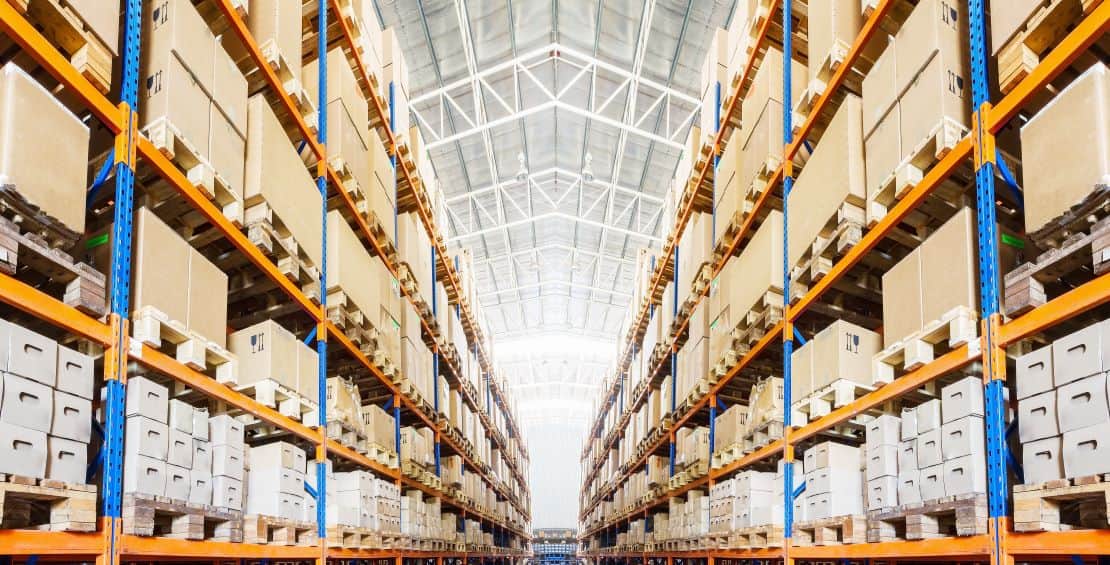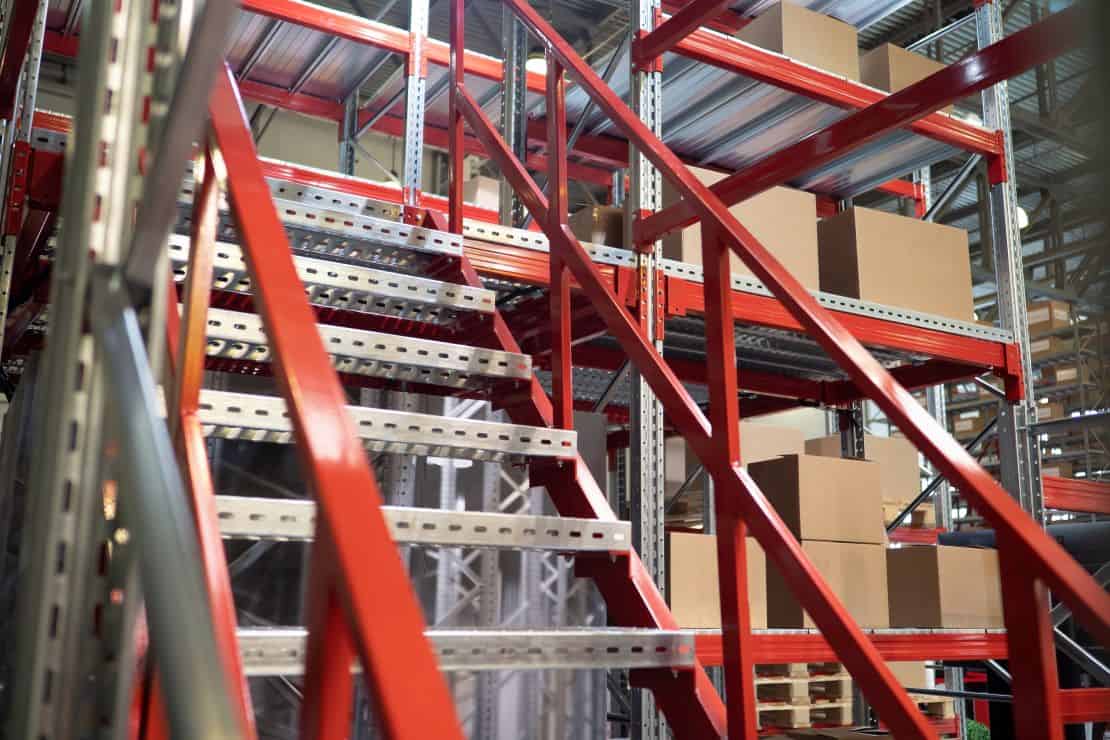It is crucial for factory owners to efficiently allocate warehouse space in order to maximize productivity. A vital aspect of this is selecting suitable industrial storage racking that matches the size and nature of the products being stored. Providing expert advice on choosing the right industrial racking, including an understanding of the various racking systems available and important factors to consider when making a purchase, can greatly simplify and enhance the process.

Types of Industrial Storage Racking in Warehouses
When there is an industrial manufacturing factory, there must also be a warehouse. However, in order to efficiently increase storage capacity, it is necessary to select appropriate industrial racking systems according to the type of use, in order to help maintain product quality, classify storage according to standards, and make searching and movement easier. Industrial shelving systems can be divided into two main categories:
1. Large-scale Rack
- Selective Rack
One of the most widely used industrial product racking systems is the selective racking. It is suitable for storing products placed on pallets, with a sturdy structure that can support heavy loads. Additionally, the distance between each rack level can be adjusted according to specific needs. Selecting this type of racking offers the advantage of working well with a variety of storage and product moving equipment, making it suitable for use in industrial factories and warehouses in general. - Drive-In Racking
This type of product racking system is suitable for warehouses with a low number of SKUs (Stock Keeping Units) but a high volume of stored products to optimize space. However, this type of product racking has limitations in terms of storing pallets, as it operates on a First-In, First-Out rotation system. Therefore, careful planning and organization of the product sequence is necessary to facilitate efficient retrieval of products. - FIFO racking
This type of racking has a roller system inside the pallets, which moves products in the same direction along the depth of the shelves, similar to drive-in racking. It operates on a First-In, First-Out system, and is ideal for warehouses that need to organize storage by SKU, as well as for products that have expiration dates or require regular rotation. - Push Back
For those looking for a racking option to store products that are not prone to damage, deterioration, or expiration, Push-Back Rack is the answer. It combines the features of Drive-In and FIFO racking in a larger size and depth, allowing for the storage of a greater quantity of products. In addition, each shelf is equipped with pallet retrieval devices, which enable products to be stored and retrieved easily. The products are loaded into the racking from the front, and they move towards the back as more products are loaded in. When a product needs to be retrieved, the pallet in front of it is removed, and the product rolls forward for easy retrieval. - Mobile Rack
Mobile racking is ideal for warehouses looking to reduce floor space and energy consumption in storage. Industrial mobile racking operates similarly to selective racking, but can be moved left and right to create openings for forklifts to access products with flexibility. This helps increase storage capacity by up to 80%. Mobile racking is often used in industries such as cold storage. - Cantilever Racks
Cantilever racks are suitable for organizing and storing long and ring-shaped items such as paper, pipes, aluminum rods, and light bulbs. They add organization to your warehouse while providing sturdy arms to safely hold the items and make them easy to locate. Cantilever racks make it easy to securely store these items while also making them easily accessible. - Mezzanine Floor
The last type of Large-scale Rack is the mezzanine floor, which is a suspended platform designed to efficiently allocate space within a warehouse. With a sturdy steel structure and the ability to support heavy loads, it is easily installed and dismantled, allowing for safe and secure storage or conversion into office space.
2. Medium-scale Rack

- Micro Rack
Micro Rack is a versatile storage solution suitable for general product storage. It can hold weights ranging from 150-250 kilograms per shelf and can be adjusted to suit the size of your products. Additionally, it features a safety back panel to prevent items from falling. Its Knock-Down structure makes it easy to install and move, making it ideal for use in both warehouses and stores. - Medium Shelving
Medium shelving is ideal for storing box-shaped or containerized products. It features longer panel spans and can hold a weight capacity of 200-300 kilograms per shelf. Its flexible adjustable height feature ensures safe and secure storage. - Multi-Tier Shelving
Multi-tier shelving is a small-sized industrial shelving solution that maximizes vertical space efficiency. It features linked mesh decking and shelves with safety features such as backstops, handrails, and staircases, making it flexible and safe to use. Its easy disassembly design makes it a great space-saving solution for horizontal spaces.
Key Factors to Consider When Choosing Racking Systems for Your Warehouse
- Select your racking based on quality and the type of pallets used. Prioritize weight capacity as the main characteristic, followed by size and width to ensure it is suitable for installation and the available space.
- Consider the type of products, including their size and weight, to determine the appropriate type and size of pallet racking. Additionally, the type of products can also help determine the selection of pallet racking.
- The space in a warehouse, including the size of the doors, width, length, and height of the ceiling, all have an impact on the selection of shelves or racking systems. It is important to consider these factors to maximize the use of space inside the warehouse.
- The type of forklift used is important to consider as it must be suitable for the intended use. This includes the height capacity and size, which must be in compliance with safety standards for safe and efficient operation.
- The rotation system of products in the warehouse is another important factor to consider. It is necessary to take into account the quantity and speed of product rotation in order to choose shelving or racking that can work efficiently with forklifts.
Choose industrial racking that meets standards with Tellus
If you are a business owner who is looking for high-quality industrial racking at an affordable price for use in your warehouse, Tellus is the supplier of storage systems with excellent quality automation equipment available in various types according to your needs. For more information, please contact us at 02-643-8044.




